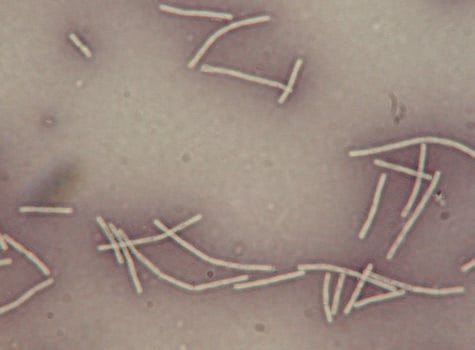Interesting Science Videos
Objectives of Negative Staining
- To perform a negative staining procedure.
- To understand the benefit obtained from visualizing unstained microorganisms.
Principle of Negative Staining
Negative staining requires the use of an acidic stain such as India ink or nigrosin. The acidic stain, with its negatively charged chromogen, will not penetrate the cells because of the negative charge on the surface of bacteria. Therefore, the unstained cells are easily discernible against the colored background.
The practical application of negative staining is twofold.
First, since heat fixation is not required and the cells are not subjected to the distorting effects of chemicals and heat, their natural size and shape can be seen.
Second, it is possible to observe bacteria that are difficult to stain, such as some spirilla. Because heat fixation is not done during the staining process, keep in mind that the organisms are not killed and slides should be handled with
care.
Reagent and Equipment’s for Negative Staining
Nigrosin, Microincinerator or Bunsen burner, inoculating loop, staining tray, glass slides, lens paper, and microscope.
Procedure of Negative Staining
- Place a small drop of nigrosin close to one end of a clean slide.
- Using aseptic technique, place a loopful of inoculum from the bacterial culture in the drop of nigrosin and mix.
- Place a slide against the drop of suspended organisms at a 45° angle and allow the drop to spread along the edge of the applied slide.
- Push the slide away from the drop of suspended organisms to form a thin smear. Air-dry.
Note: Do not heat fix the slide. - Examine the slides under oil immersion.
Result Interpretation of Negative Staining


Does the acidic nature of the acidic dye (ex. Nigrosin) kill the bacteria so that heat-fixing is not an issue?
No! As it is mentioned that Bacteria are not killed so handle it with care.